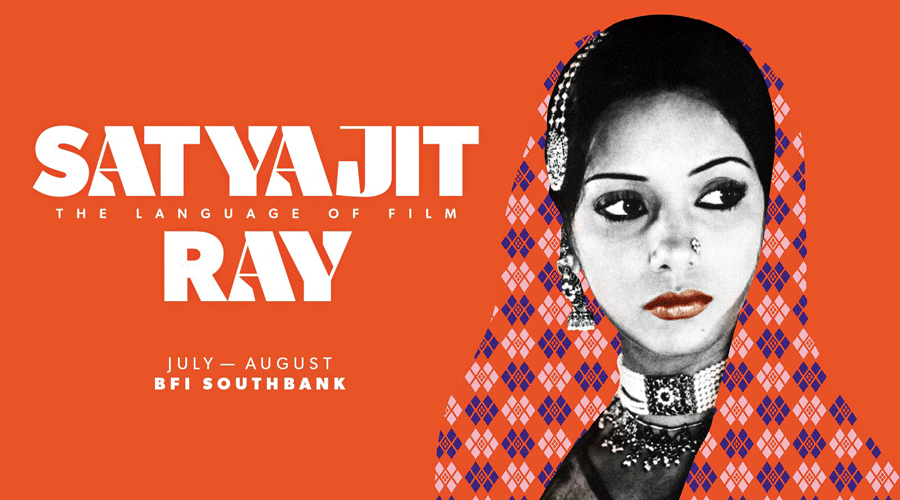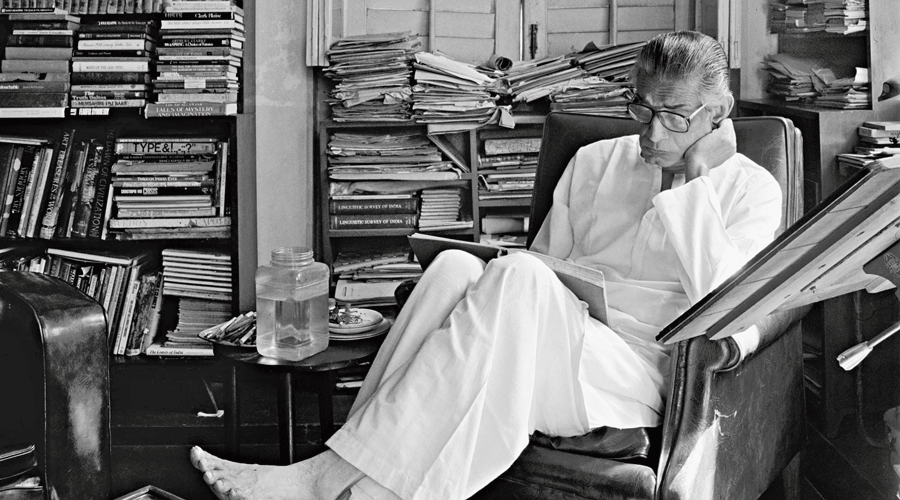What is probably the biggest ever celebration of Satyajit Ray films to be held anywhere in the world is to take place in London, aimed partly at a new generation unfamiliar with his work and possibly even his name.
After a year’s hard work, the season has been put together by the British Film Institute, which had a hand in promoting Ray after Pather Panchali was named “the best human document” at the 1956 Cannes Film Festival.
All 38 of his films, some of them digitally enhanced, will be shown but in a break with tradition, they are not being screened chronologically but grouped together under various themes that have been chosen by Sangeeta Datta, the season’s programmer.
Colourful pop posters for Satyajit Ray: The Language of Film — one features Shabana Azmi — have tried to get away from the black and white image normally associated with the director.
The original plan was to hold the season last summer to mark the centenary of Ray’s birth on May 2, 1921, but had to be postponed to July and August this year because of the pandemic.
The BFI’s lead programmer, Justin Johnson, said: “The BFI presents a complete retrospective of one of the world’s greatest filmmakers, Satyajit Ray, this summer — Ray’s centenary in 2021, as well as 75 years of Indian Independence, mark a timely juncture to showcase his complete body of remarkable films.”

A new BFI poster of Shabana Azmi. The Telegraph
“In addition, the availability of numerous restorations on 35mm from our partners at the Academy Film Archive, as well as three 4K restorations made by the Criterion Collection and the UK premiere of four brand new 4K restorations presented by NFDC — National Film Archive of India, will ensure that audiences will get to see Ray’s work in the best possible way on our big screens at BFI Southbank.
“Satyajit Ray was a great supporter of the BFI and was awarded our highest honour, a BFI Fellowship, in 1983; it is only fitting that we continue to recognise his contribution to world cinema with this major season, which we hope will reach both existing fans and audiences who are yet to discover Ray’s lyrical, poetic masterpieces.”
Datta said the BFI had “spent a lot of time designing the posters because they don’t want that old black and white look to be associated with Ray. There are younger people working in the team, so you will find the posters are colourful and very nice. They’ll be on the buses and on the sides of buildings and lots of exciting things are planned.”
She paid tribute to the BFI: “They really had to work for more than a year to get all the material — it’s 38 films!”
Ray’s trilogy, with Pather Panchali followed by Aparajito (The Unvanquished) in 1956 and Apur Sansar (The World of Apu) in 1959, is being shown under the theme, “Of fathers and sons”. The theme also includes Shakha Proshakha (Branches of the Tree) in 1990.
The next theme, “The big city”, looks at changing urban morals and groups together Mahanagar (The Big City) in 1963, Pratidwandi (The Adversary) in 1970, Seemabaddha (Company Limited) in 1971, Jana Aranya (The Middleman) in 1975 and Agantuk (The Stranger) in 1991.
This is followed by “Fantasies and detectives”, which groups together Parash Pathar (The Philosopher’s Stone) in 1958, Chiriakhana (The Zoo) in 1967, Goopy Gyne Bagha Byne (The Adventures of Goopy and Bagha) in 1969, Hirak Rajar Deshe (The Kingdom of Diamonds) in 1980, Sonar Kella (The Golden Fortress) in 1974, and Joi Baba Felunath in 1978.
Under “The woman question”, films include Devi (The Goddess) in 1960, Pikoo (1980), Teen Kanya (Three Daughters) in 1961, Charulata (The Lonely Wife) in 1964, and Ghare Baire (Home and the World) in 1984.
Aparna Sen will be to London to introduce her debut movie, Samapti, one of the three stories in Teen Kanya, and there will be many other talks and discussions.
The “Travel stories” include Kanchenjungha (1962), Abhijaan (The Expedition) in 1962, Kapurush (The Coward) in 1965, Mahapurush (The Holy Man) in 1965, Nayak (The Hero) in 1966, and Aranyer Din Ratri (Days and Nights in the Forest) in 1970.
Under “Histories of the land” come Jalsaghar (The Music Room) in 1958, Shatranj ke Khiladi (The Chess Players) in 1977, Ashani Sanket (Distant Thunder) in 1973, Sadgati (Deliverance) in 1981, and Ganashatru (Enemy of the People) in 1989.
Ray also made a few documentaries — one on Rabindranath Tagore in 1961 and another on his father, Sukumar Ray in 1987. He also made Bala, on classical dancing, Sikkim (1971), and Two (1964), a short film that sees two children, one rich, the other poor, encounter each other through a window.
The season will no doubt pull in the platoon of retired Bengali doctors in their eighties who are reminded of “our good old college days in Calcutta” but of equal, possibly greater, interest to the BFI are people like the educated young British Asian who required help “with the spelling of Satyajit”.











